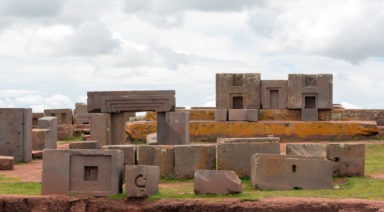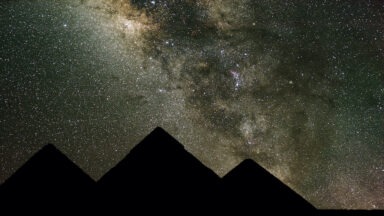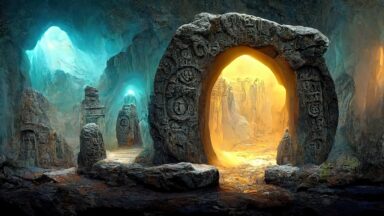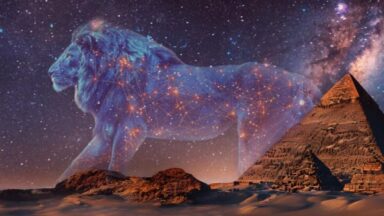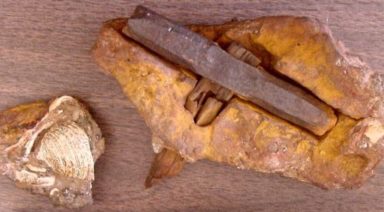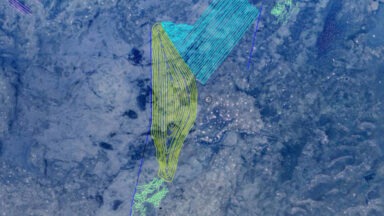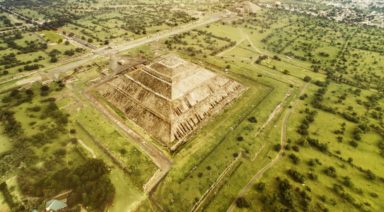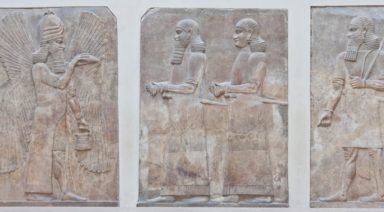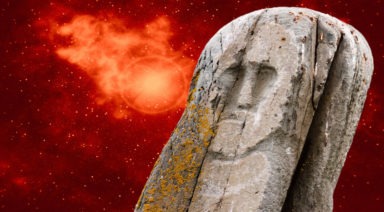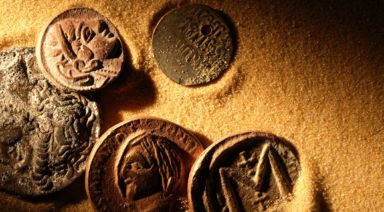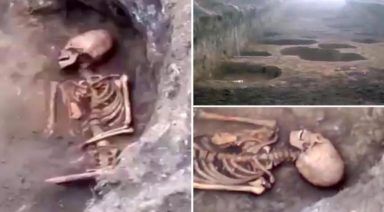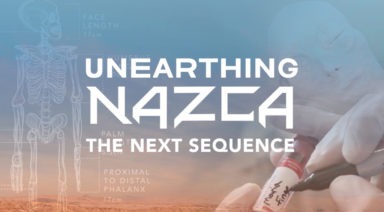What are the Eleusinian Mysteries?

Mystery Schools have been an important aspect of human spirituality for thousands of years. The Mysteries have fulfilled our needs to find meaning and the urge to uncover connections between ourselves and nature, our role in the workings of the Universe, our spiritual connections to ourselves, our fellow beings, and to the divine. Most Mystery Schools dealt with the realities of life and death. They delved into the psyches of the initiates, urging them to probe their belief systems, often shocking them into a new sense of awareness and urgency to live life to the fullest.
Mystery Schools: Shrouded in Secrecy
The ancient world shrouded their Mystery Schools in secrecy. There were many reasons for this, not the least of which was that it made for an aura of exclusivity, instilling envy for those not initiated, the profane. (The word, “profane,” comes from the Latin, “pro fanum,” meaning before, or outside of the temple.) Even though the Schools were spiritually based, they could also be quite expensive and often supported large bureaucracies connected with the specific School involved.
Known for Initiations
Undoubtedly, ancient Egypt had its Mystery Schools, but they were loath to shed much light upon their operations, or even their existence. The Panic Rites, as well as the Bacchanal, were both famous for their indulgent practices. The Orphic Mysteries were said to demand the housing of initiates in a dark cave for nine months in complete silence, symbolizing the gestation period before birth. Once the allotted time elapsed, they were brought forth into the sunlight as new beings.
An Economic Boost
Mystery Schools were common and often hosted by specific cities that relied upon the yearly gatherings to maintain a healthy economy. The Mysteries are still amongst us. Not only have they never stopped being a part of our spiritual quest, but they are still strong and healthy today, although perhaps not as obvious as they once were, but probably just as profitable. Of all the Mysteries, the Eleusinian is the most famous, as well as being amongst the most mysterious.
What Does Eleusinian Mean?
Eleusis was a town about 30 miles southwest of Athens, Greece. It was the home of this particular Mystery and lends its name to the tradition. It has come to mean much more, due to the renowned nature of the massive event that took place there. The road from Athens to Eleusis is still the route of a popular pilgrimage for those seeking a hint into the hidden world of the Eleusinian Mysteries.
What Is a Mystery School?
A Mystery School may or may not be associated with a specific religion, dogma or overriding doctrine. One thing they all have in common is the inviolable vow of secrecy not to reveal any of the proceedings, or beliefs revealed behind the sealed doors of the temple. They seek to impart valuable life lessons and spiritual knowledge to each initiate, usually exemplified through a series of initiations, each one filled with symbolism, personal challenges, and usually presented with great dramatic flair.
The Golden Dawn is a modern Mystery School dedicated to the teachings of Hermetic spirituality and the magical arts. There are many such organizations, including The Rosicrucians, as well as some quasi-religious groups that have a tendency to raise the eyebrows of mainstream society.
Is Freemasonry a Mystery School?
Freemasonry could be seen as a form of a modern Mystery School. When I went through The Scottish Rite of Freemasonry, I was stunned to realize that I was witnessing one of the Mystery Schools of the modern era. Each degree was presented with pomp, sparing no expense in order to bring the initiate into a certain frame of mind, teaching lessons, defining morality and urging self-examination. Of course, there was always an oath of secrecy.
I’m no longer an active member, but I enjoyed the initiations, as well as my participation in several of the degrees. The missing element in those Mystery plays was the feminine power of the goddess. Without the feminine, the masculine is unimportant.
The Eleusinian Mystery School was one of the most popular of its kind and provided what must have been a remarkable experience, for it continued to attract large numbers of devotees for what may have been up to 2,000 years.
Why was it so popular?
Demeter and Persephone
The story of Demeter and Persephone is one of the most dramatic and enduring of all the Greek myths. It’s filled with tragedy, grieving, brutality, conniving, acceptance, and ultimate victory. Within this myth is the darkest fear of every parent, the loss of the child, in this case to the god of death and the underworld. It focuses upon the horrific agony of a mother losing her beloved daughter in an atrocious act of objectification and abduction.
Kore
The story is of a young girl, Kore, the daughter of the goddess of Earth’s fertility, Demeter. Innocent Kore was picking flowers with her friends on a beautiful day. Suddenly, Hades, the god of the underworld, erupted from beneath the earth, four black horses drawing his iron chariot. Hades abducted Kore, and she was forcibly thrust into her new life as his Queen.
A Grief Stricken Demeter
The grief of Demeter became the cause of parched earth, as she refused to do anything but search for her daughter. The ground was devoid of greenery and sustenance-giving life. People and animals starved. Her sorrow influenced every aspect of the world and threatened to destroy life itself unless Kore was returned.
A Fate Determined by Pomegranate Seeds
Eventually, Hermes was allowed to enter the underworld and release Demeter’s daughter to the land of the living. However, the fact that young Kore had eaten 4 pomegranate seeds meant that she had to spend 4 months each year with her new husband. (The number of seeds is thought to reflect the non-growing months in the agricultural community that tells the tale. Some will say she ate 3 seeds and some 6.)
An Ode to The Human Condition
This seemingly simple myth is packed with powerful secrets of the human condition. Not the least of these dynamics is of Kore, the child, maturing into Persephone. In Greek mythology, Persephone was portrayed as eventually loving her husband, and in some cases being more feared than Hades.
Although the exact meaning of the name, Persephone, has been much disputed, most would agree that it harbors dark and ominous intent. Some have said that it means, bringer of death, but I had a mythology professor in college who was convinced that her name meant “Dreaded Queen.” No matter the exact meaning, what is obvious is that yearly, she went from being a pleasant maiden to becoming the dark and powerful queen of the underworld.
Between the Living and the Dead
Persephone has the ability to move between the land of the living and the dead. Hers is a gift that no others share, other than Hermes. She moves seamlessly between the past and present, life and death, hopefulness and fear, reality and illusion. She faces the horrors of the dark unknown on a regular basis and once again brings life to the world, as her mother rejoices in their reunion. Her power is unparalleled, but her transition was wondrous. From darkness to light and back again, she morphed from a relatively normal individual into the icy, unyielding co-ruler of eternity.
Demeter and Persephone were amongst two of the most powerful deities in the Greek pantheon. One ruled life and the world of light and the other death and shadows.
Between them, they encompassed the totality of existence and certainly encouraged much contemplation for the joy of life and a necessity to embrace it fully while still in the realm of Demeter, however long it lasted, for the realm of Persephone was assured.
Such knowledge and power would have been coveted by anyone with a sense of spiritual purpose and a desire to maximize the powers of life. It’s no wonder that the Eleusinian Mysteries were the most popular of their time.
Who Could Join The Eleusinian Mystery School?
Entrance into the Eleusinian Mysteries was remarkably open. Since intense secrecy surrounded the School, very little is known of the actual ceremonies or teachings. The penalty for exposing knowledge, given in secret, was death. Those who took the oath of fidelity had to do so seriously and with absolute devotion. Yet, almost anyone could enter the School to uncover the secrets themselves.
The main qualification was that initiates had to be Greek-speaking. Free men and women could join, as could slaves and servants. The rich and powerful were as welcome as the common workers. Men and women had equal standing. Even foreigners were allowed into the Mystery, as long as they spoke Greek and could pay the fee for their attendance. Yes, it wasn’t free. Even in the ancient world, there was a price for sacred knowledge. Some things never change.
What Went on Within The Eleusinian Mysteries?
Unfortunately, very little is actually known about the process. There were Priestesses, Hierophants, new initiates and those who had already been initiated, returning for more light. There was a basket that held something that the initiates were compelled to look at, although no one knows for sure what it was.
There was also the drinking of Kykeon at the end of the Mysteries. This was a drink made of barley, probably fermented and possibly containing psychotropic ingredients.
Most people believe that much of the intensity behind the Mysteries themselves came after a week-long observance of work, dancing, play, perhaps sexual encounters and most likely a fast. The introduction of a powerful hallucinogen would certainly explain many of the reports of the Eleusinian ceremony being a cathartic, life-changing experience. Although much of the hallucinogenic drug use in the 60s was recreational, there was also a powerful movement to use such drugs for purely spiritual reasons. That tradition still exists today.
Whatever occurred in the Eleusinian Mysteries, it made an immense impression upon its initiates. I imagine that it was desirable to go every year, in order to experience a sort of rebirth and to enhance the connection to the powerful earth goddess Demeter and her daughter Persephone. The dramatic change from Kore, a maiden picking flowers on a beautiful day, into the dreaded queen of the underworld is a fascinating one and speaks to the depths of the human soul, as well as to the unexpected destinations of life.
The Legacy of the Eleusinian Mysteries
The legendary status of Eleusis has fueled interest in Mystery Schools of life and death for millennia. Dozens of Mysteries exist today, borrowing from every and any culture that may provide a peek into the secrets of the soul of the universe. Whether it be a peyote ceremony, by a campfire in the desert, or a Masonic initiation, complete with costumes, makeup, and orchestral music, the intent is the same. It is a hopeful journey to improve the self.
It is the search for meaning in life, for a thread of logic that connects those things that seem unconnected, and most definitely, the attempt to remove the fear and dread of death. Whether it be a simple lodge of seekers or an order that practices high magic, the aim is the same, to give us a further and deeper appreciation of life and to maximize our joy in every moment of this short but powerful existence.
Luckily, each of us can appreciate this goal without a Mystery School. All it takes is an awareness of this gift of life and an appreciation, and gratitude, for our luck to be here. Seek your truth. Never stop your passion for The Mysteries. Look outside and never forget to look within. The real Mystery is within you and me, and it awaits our knock upon the door of the Temple. What are you waiting for? Your spiritual future beckons.
Until next time, I wish you all peace and love.
How the Mystery of Puma Punku Rivals the Pyramids

Pumapunku, also spelled Puma Punku, is the remains of an Incan holy site in the jungles of Bolivia that has attracted much attention as of late. The name means “door of the puma,” and as far as archaeologists know, Puma Punku was a thriving, ancient town originating somewhere around 500 and 600 C.E.
Here we are, a century and a half later, and irrepressible rumors continue to grow that Puma Punku’s massively heavy stone block structures were cut so precisely that highly advanced, ancient technology seems to be the only explanation for their incredible stone masonry.
The Tiwanaku (Tiahuanaco) civilization, which predated the Inca, likely influenced them through advanced stonework and agricultural practices. Although the Tiwanaku had declined before the Inca rose to power, the Inca may have adopted and adapted their techniques.
Located 45 miles west of the modern-day city of La Paz, Puma Punku is situated in the still-thriving city of Tiwanaku, high upon a desert plateau of the Andes Mountains, at an altitude of more than 12,000 feet. Tiwanaku is significant in Inca traditions, where the world was once believed to be created.
In this isolated part of the world, the ruins of Puma Punku showcase smooth stone structures made from large andesite and sandstone blocks, featuring precision cuts, clean right angles, and expertly fitted joints without the use of mortar. The megaliths are among the largest on earth, with some weighing several tons. While many of the structures are still standing centuries after their inhabitants disappeared, most of the buildings are scattered and broken around the area, leaving researchers to wonder what possibly could have moved around impossibly heavy buildings.



